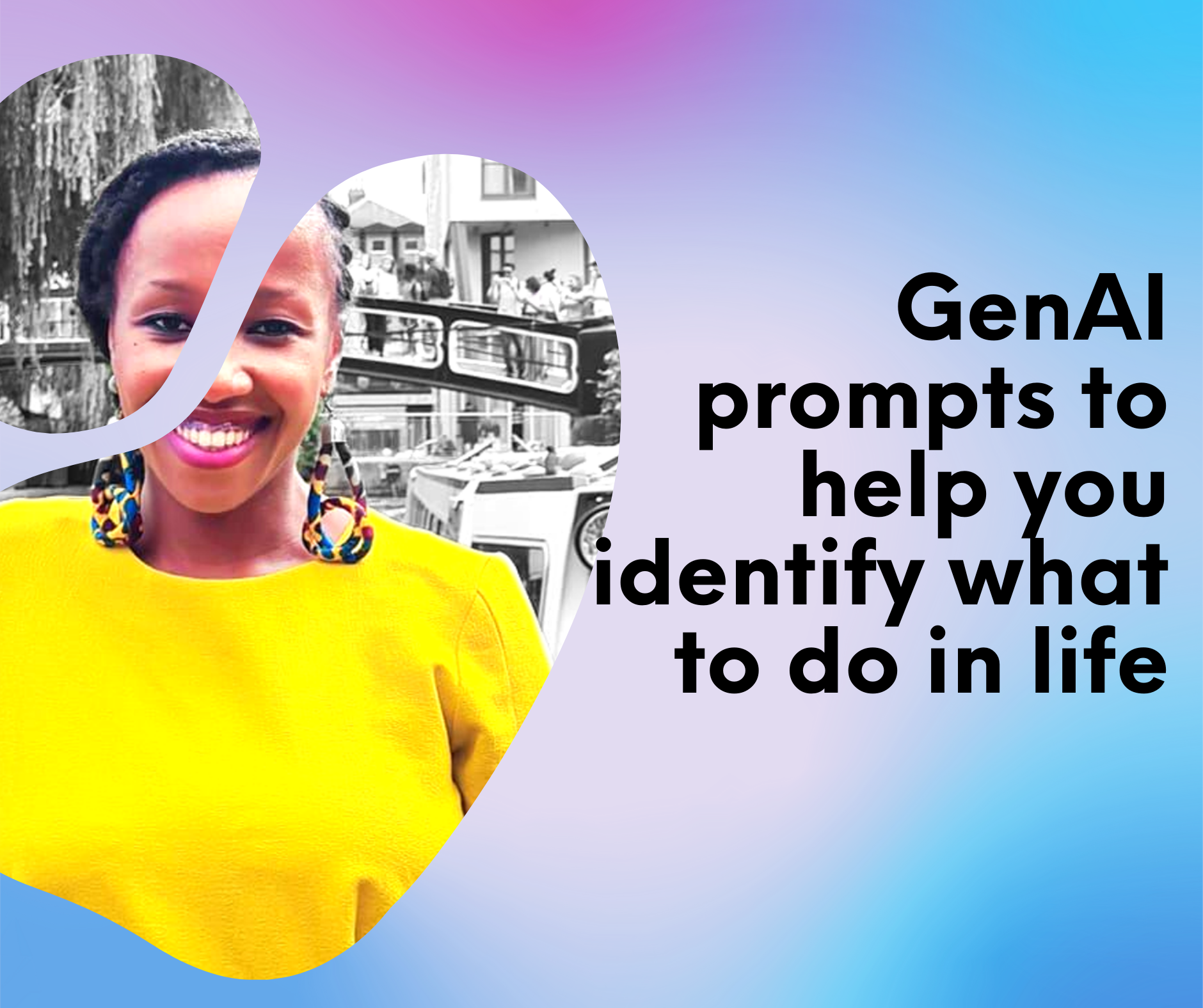You might be at a crossroad in your life or are still searching for your dream job or perhaps wondering if what you are doing is what you are meant to be doing. In a previous article, I explored the concept of IKIGAI or identifying what you want to do in life. I presented the diagram below as a way to identify what you want to do by looking at the intersections of what you love, enjoy, care about, what you are good at, what the world needs (…that you can give) and what you can be paid for.

In the article, I shared a manual process I had undertaken that includes writing down lists under each theme and then finding intersections between the four lists and analysing them to come to a conclusion. While this was very fruitful, it was still a manual process that could become challenging with longer lists.
With their ability to access vast information about the world and find intersections, in this blog post I explore the use of textual Generative AI (GenAI) tools to support the process of finding what to do in life. Textual GenAI tools allow you to interact with them in a natural language manner and have been trained on a vast amount of information that they are able to analyse, process and provide new insights. I share a process and set of prompts I used to reach, not so surprisingly, similar conclusion to what I had come to manually but I reached there faster and found a few things along the way, like ideas for side hustles. I also include Screenshots from one of the tools I used, Google’s Gemini. You can also test the prompts out in Open AI’s ChatGPT.
Prompt: As an expert IKIGAI coach, you are going to help me find my Ikigai, the intersection of what I love to do, what I am good at, what the world needs, and what I can get paid for.
Here is the list of what I love, enjoy and care about.
- Travelling
- Empowering people
- Watching good tv shows and movies
- Listening to music
- Dancing
- Critical thinking
- Data analysis
- Baking
- Spending time with my family
- Bringing out the best in people
- Writing blog posts that share new insights
- Conducting research and problem solving on problems that I care about
- Having a good laugh
- Making functional arts and crafts items
- Reading books especially crime related or courtroom dramas
- Being creative and coming up with solutions
- Organising meaningful events
Here is then the list of what I am good at:
- Baking
- Event management and planning
- Big picture thinking
- Being disciplined and seeing things through
- Adapting and being flexible
- Staying cool under pressure
- Good eye for visuals
- Connecting people
- Being proactive
- Being creative and generating ideas
- Teaching
- Critical thinking
- Research, gathering data, evidence
- Creating visually appealing visualisations
- Braiding hair
- Supporting and inspiring people
- Learning new skills
- Data analysis
What are the intersections between what I love and what I am good at?”
Screenshot 1 in the Gallery below shows the output with a list of intersections that it found. The first and last two options were more aligned with I want to do. I entered the following prompt after that.
Prompt: Looking at the Creative problem-solving and Data storytelling, what are the problems in the world that need solving where those two things would be applicable.
Screenshot 2 gives a list of problems that are aligned with my skills and what I enjoy.
Prompt: List the ways in which I can make good money from solving those problems and how. Include suggestions of who also could pay for it.
As I have been thinking of going more on the entrepreneurial route, I also asked:
Prompt: What about entrepreneurial options. What businesses can i build to solve those problems.
Many of the ideas that were given in the output align very much with what I have been thinking about and actually had started doing, e.g., see HERE. From these I can delve further and narrow down on what to try.
From these prompts, you can begin to form a picture. Naturally GenAI tools are limited to your context or understanding of your environment. However, they can provide general thinking points to continue and generate ideas on how to start and create a road map for yourself.
Enjoy the journey of exploration and discovery!




